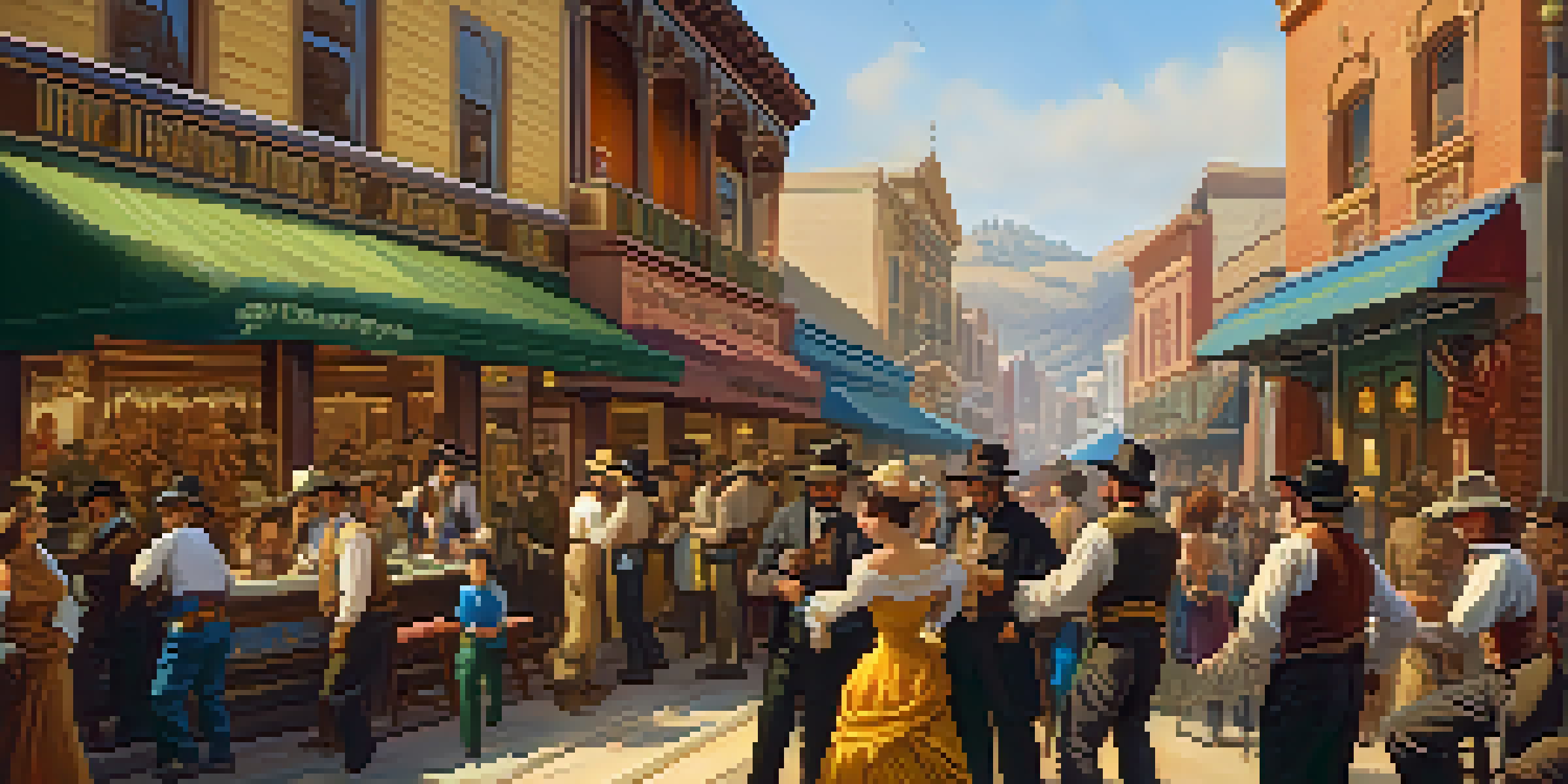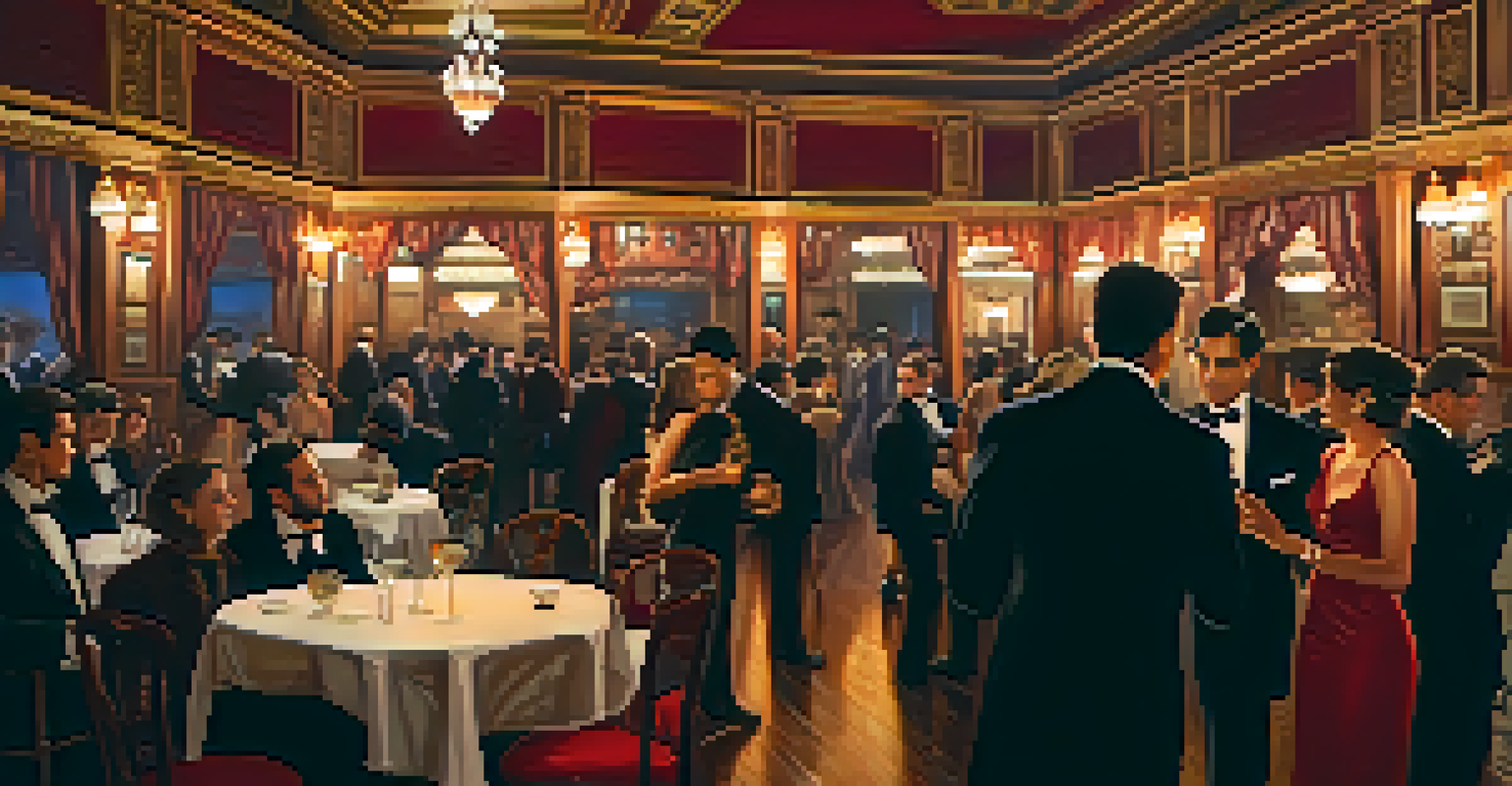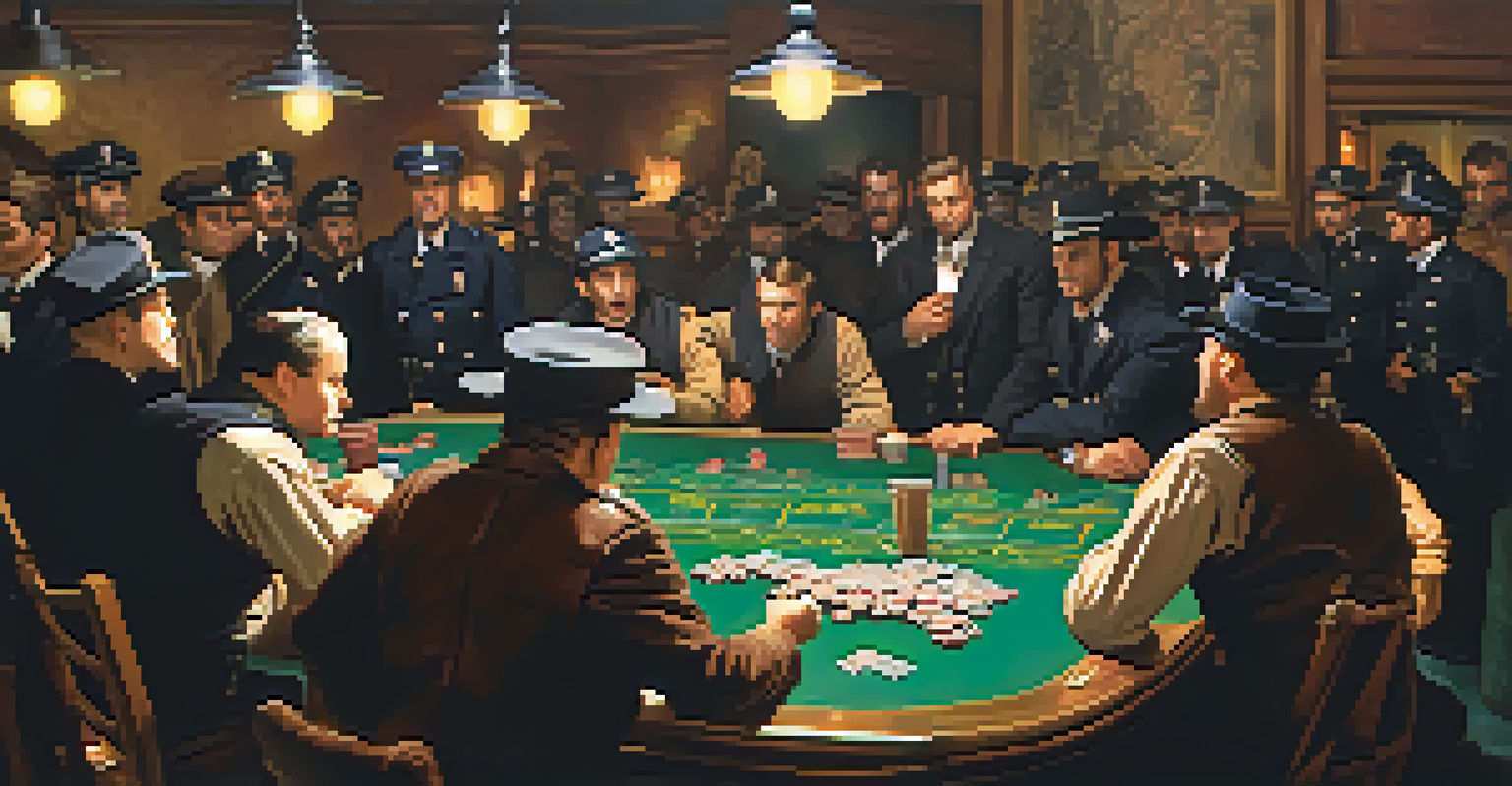The Barbary Coast: San Francisco's Notorious Red-Light District

A Brief Introduction to the Barbary Coast's History
The Barbary Coast, San Francisco's infamous red-light district, emerged during the California Gold Rush in the mid-1800s. As fortune seekers flooded the city, so did vice, leading to a vibrant yet dangerous area filled with saloons, brothels, and gambling houses. This notorious neighborhood quickly became a symbol of the wild and lawless spirit that characterized San Francisco's early days.
San Francisco is a city where the past and present collide, creating a tapestry of stories that shape our understanding of who we are.
The name 'Barbary Coast' itself evokes images of pirate-infested waters and lawlessness, reflecting the chaos that reigned in this part of the city. The area was not only a haven for vice but also a melting pot of cultures, where gold miners, sailors, and immigrants mingled in search of opportunity and escape. It was a place where the thrill of adventure often collided with the darker side of human nature.
As the city grew, the Barbary Coast became a focal point for both illicit activities and vibrant nightlife, attracting all walks of life. Yet, it also attracted the attention of law enforcement, leading to an ongoing battle between vice and morality. This tension is what makes the history of the Barbary Coast so compelling and rich.
Life on the Barbary Coast: A Day in the Life
Life on the Barbary Coast was a whirlwind of activity, filled with the sounds of laughter, music, and sometimes, conflict. Streets were lined with colorful establishments, from lively dance halls to shadowy brothels, each offering its own brand of entertainment. For many, a visit to the Barbary Coast was a chance to escape the rigors of daily life and indulge in the city's more hedonistic pleasures.

However, this vibrant atmosphere also came with its share of dangers. With a high volume of people drawn to the area, crime rates soared, and altercations were common. Patrons needed to be on guard, as theft and violence lurked just around the corner, creating a juxtaposition of excitement and peril.
Barbary Coast: A Historical Icon
The Barbary Coast emerged during the Gold Rush as a vibrant yet chaotic district, symbolizing San Francisco's wild early days.
Despite the risks, the Barbary Coast's allure remained strong. Stories of thrilling nights and unexpected encounters became part of the local lore, often romanticized in literature and later in film. This blend of danger and allure is what keeps the memory of the Barbary Coast alive today.
The Cultural Melting Pot of the Barbary Coast
The Barbary Coast was not just a red-light district; it was a vibrant cultural melting pot. People from diverse backgrounds converged here, bringing their unique traditions, cuisines, and stories. This mix of cultures contributed to a rich tapestry of life, where the influences of Chinese, Irish, and Italian immigrants, among others, shaped the local scene.
History is not a burden on the memory but an illumination of the soul.
The area also gave rise to distinct forms of entertainment, including Chinese opera and jazz music, which flourished in the dance halls and theaters. These cultural expressions reflected the community's diversity and resilience, showcasing how art and creativity can thrive even in the most challenging environments. The Barbary Coast became a place where different cultures not only coexisted but also enriched one another.
Today, the legacy of this cultural melting pot continues to resonate in San Francisco. You can still find echoes of the Barbary Coast's eclectic spirit in the city's neighborhoods, where restaurants, galleries, and cultural events celebrate the diversity that defines this iconic city.
The Role of Law Enforcement and Regulation
As the Barbary Coast gained notoriety, so did the efforts of law enforcement to control the chaos. Police raids were common, targeting brothels and gambling dens, leading to a constant game of cat and mouse between authorities and vice operators. This ongoing struggle highlighted the challenges of regulating morality in a place driven by desire and profit.
Despite these efforts, many establishments found ways to continue operating, often resorting to bribery or corrupt practices to remain in business. This corruption further entrenched the relationship between vice and governance, complicating the narrative of law enforcement's role in the area. It also created a sense of disillusionment among residents, who saw their neighborhoods as battlegrounds for power and control.
Cultural Melting Pot of Diversity
This area was a convergence of cultures, where diverse communities enriched local traditions and entertainment.
The legacy of these regulatory efforts is still felt today, as discussions about vice and morality continue to shape urban policy. The history of law enforcement on the Barbary Coast serves as a cautionary tale about the complexities of attempting to regulate human behavior in a vibrant, multifaceted society.
The Decline of the Barbary Coast
The Barbary Coast began to decline in the early 20th century, as urban renewal efforts and changing social attitudes reshaped San Francisco. The city’s focus shifted towards modernization, and the once-thriving district was gradually transformed. Many establishments were closed down, and the area lost much of its former allure, becoming a shadow of its notorious past.
As the Barbary Coast faded, new neighborhoods emerged, each with its own unique identity. The city sought to distance itself from the vice that had once defined the area, aiming for a more family-friendly image. This transition marked a significant cultural shift, as the rampant activities of the past were replaced by a focus on commerce and tourism.
While the Barbary Coast may no longer exist in its original form, its history remains a captivating chapter in San Francisco's story. The lessons learned from its rise and fall continue to inform discussions about urban development and the complexities of moral regulation in modern cities.
The Barbary Coast in Popular Culture
The legacy of the Barbary Coast lives on through its portrayal in popular culture. From novels to films, the district has become a symbol of adventure and intrigue, often romanticized as a place of danger and excitement. This fascination has allowed the Barbary Coast to remain relevant in the collective consciousness, even as the actual district has transformed.
Many writers and filmmakers have drawn inspiration from the stories of the Barbary Coast, crafting narratives that capture its wild spirit and colorful characters. These portrayals often blur the lines between fact and fiction, creating a mythos around the district that continues to captivate audiences. The allure of the 'Gold Rush' era and the thrill of the unknown resonate strongly in these artistic interpretations.
Legacy of Law Enforcement Challenges
Efforts to regulate vice in the Barbary Coast reveal the complexities of morality and governance in a bustling urban environment.
Through its representation in culture, the Barbary Coast serves as a reminder of the complexities of the human experience. It invites us to explore themes of desire, morality, and community, making it a timeless subject for storytelling that resonates across generations.
Visiting the Remnants of the Barbary Coast Today
Today, remnants of the Barbary Coast can still be found scattered throughout San Francisco, inviting visitors to explore its storied past. Areas such as North Beach and Chinatown offer glimpses into the vibrant culture that once thrived in the district. Walking tours and historical landmarks help to paint a picture of what life was like during the Barbary Coast's heyday.
While much of the original vice-driven atmosphere has dissipated, the spirit of the Barbary Coast lives on through its historical significance. Museums, monuments, and guided tours provide opportunities to learn about the complexities of this infamous district, allowing visitors to appreciate its place in San Francisco's history. It's a chance to reflect on how far the city has come since those tumultuous times.

In essence, visiting the remnants of the Barbary Coast is not just about looking back—it's about understanding the multifaceted history of urban life. As you wander through the streets, you're reminded of the lessons learned from the past and the vibrant culture that continues to evolve.